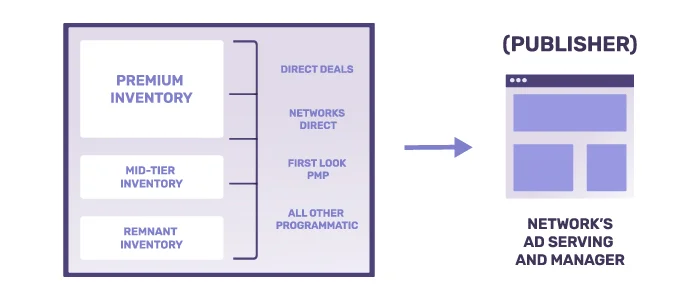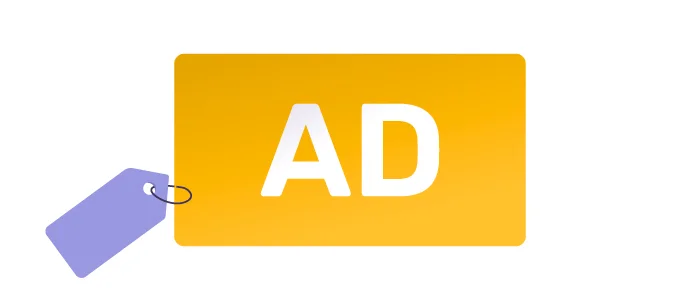Ad Inventory Explained: What It Is and Why It Matters
Have you ever encountered ad inventory and wondered what it means or involves within the Ad Tech industry? Well, you’re not alone. Indeed, it might sound intimidating, but it’s not, and the concept is simple. Like inventory management in economics, ad inventory is about using resources best.
However, unlike physical store inventory, ad inventory refers to the advertising spaces a publisher can sell. It includes banners, video slots, and other ad placements that advertisers can buy to promote their products or services.
As for today, ad inventory plays a meaningful role in helping advertisers reach their target audience while allowing publishers to monetize their platforms effectively. This understanding can help advertisers and publishers make informed choices that improve their success.
So, let’s explore ad inventory, how it works, and why it’s essential today.
Table of Contents
What is Ad Inventory?
Ad inventory is the total amount of advertising space a publisher, such as a website or app owner, has available for advertisers to sell.
These spaces, also known as digital advertising’s real estate, can include banners, video ads, native ad placements, and more. The value of ad inventory is often measured in impressions, which represent the number of times an ad can be served to viewers.
Historically, ad inventory started with print media, such as newspapers and magazines. Yet, it has shifted into the digital space, spanning websites, mobile apps, and even video content, offering various ad formats. Essentially, the larger a platform’s audience, the more ad inventory it can sell.
The shift towards programmatic advertising has revolutionized buying and selling ad inventory. In the past, deals were negotiated directly between publishers and advertisers.
Now, most ad inventory transactions occur programmatically through automated platforms, which provide a more efficient and data-driven approach. This system uses real-time bidding (RTB), where ad prices are determined through a live auction, allowing advertisers to get the most relevant placements at the right price.
To illustrate this, in 2024, nearly 90% of digital ad spending is estimated to be conducted through programmatic channels, highlighting the power of automated processes in the advertising industry.
Additionally, programmatic ad spending in the U.S. alone is projected to surpass $150 billion by the end of the year.
Ad inventory is generally bought using an impression-based cost model, such as Cost-Per-Mille (CPM), which refers to the cost per thousand impressions. This helps advertisers reach broad audiences while providing publishers a reliable way to generate revenue from their ad spaces.
Why is Ad Inventory Important?
Ad inventory is essential for both advertisers and publishers. For advertisers, having access to the proper ad inventory means connecting with their target audience most effectively. It helps ensure the optimal use of advertising budgets, leading to higher engagement rates and better overall campaign performance.
By leveraging high-quality ad inventory and ad mediation, publishers can maximize their revenue potential while providing advertisers spaces to improve their campaign returns.
Thus, effective ad placement improves the user experience, making it a win-win for everyone involved.
Types of Ad Inventory

Ad inventories depend on their campaign objectives, budget, and desired reach. Each type of inventory serves different purposes, making it essential for advertisers and publishers to understand the options available.
Below are some of the most notable types of ad inventory:
Premium Ad Inventory
Premium ad inventory consists of advertising spaces in highly visible locations such as above-the-fold banners, homepage slots, or in-content prime positions. Due to their effectiveness in gaining audience attention and engagement, these ad spaces are typically sold directly to advertisers at a higher price.
Premium inventory is ideal for brand awareness campaigns that require high visibility and broad reach.
Remnant Ad Inventory
Remnant inventory refers to unsold ad spaces that publishers offer at discounted rates through ad networks or programmatic exchanges.
While these ads may appear in less prominent positions, they are a cost-effective solution for advertisers with limited budgets or campaigns focusing on retargeting. Remnant inventory ensures publishers can monetize all their ad space, maximizing revenue.
Mid-Tier Ad Inventory
Mid-tier ad inventory is positioned between premium and remnant. It offers decent visibility without the cost of premium ad spaces, making it a suitable option for campaigns needing balanced exposure.
Examples include banners within articles or placements on content-heavy pages, offering engagement at a moderate price.
Ad Inventory Pricing Models

Understanding ad inventory pricing models is important for advertisers to allocate their budgets effectively and achieve their desired outcomes. Each model serves different objectives, whether it’s maximizing visibility, driving user actions, or ensuring efficient ad spending.
Here are the key pricing models used in digital advertising:
Cost per Thousand Impressions (CPM)
CPM, or cost per thousand impressions, charges advertisers for every thousand times an ad is displayed. This model is suitable for brand awareness campaigns that aim to maximize the number of views and impressions.
Cost Per Click (CPC)
CPC (cost per click) involves paying for each click an ad receives, meaning advertisers only pay when users actively engage with their ad. This pricing model is ideal for driving website or landing page traffic and measuring user interest.
Cost Per Acquisition (CPA)
CPA, or cost per acquisition, charges advertisers when a specific action, such as a purchase or sign-up, is completed. This model ties costs directly to campaign success, making it ideal for conversion-oriented campaigns.
Cost Per View (CPV)
The CPV is used for video ads, where advertisers pay based on the number of times users view the advertisement for a specific duration, typically at least 30 seconds. Thus, it is particularly effective for campaigns focusing on audience engagement through storytelling.
Flat Rate Pricing
In flat-rate pricing, advertisers pay a fixed amount for ad placements over a set period, regardless of impressions or clicks. This model is commonly used for guaranteed exposure in high-traffic areas.
Programmatic Pricing Models
Programmatic pricing uses real-time bidding (RTB) and fixed pricing models to allocate ad inventory efficiently. As a result, RTB enables advertisers to bid for impressions in real-time, while fixed pricing offers predictability. Both models serve different campaign needs, from broad reach to precise targeting.
Viewable CPM (vCPM)
Viewable CPM charges advertisers only for impressions viewed by users, ensuring that ad spending is directed toward placements with the potential for user engagement.
How to Calculate Ad Inventory

Calculating ad inventory helps publishers understand how much advertising space is available to sell. It involves several metrics to estimate inventory accurately, ensuring proper planning and revenue optimization.
Determine Page Views
Start by calculating the total number of page views for a specific period (e.g., a month). This represents the number of times users load pages and serves as the foundation for estimating impressions.
Identify Ad Slots per Page
Count the ad slots available on each page layout, including all ad placements such as banners, in-content, and sidebars.
Calculate Total Impressions
Multiply the page views by the number of ad slots to calculate the total impressions available for that period.
Formula: Total Impressions = Page Views × Ad Slots per Page
Adjust for Fill Rate
Due to varying factors like demand and ad blockers, not all ad slots will be filled. Multiply the total impressions by the fill rate to determine the number of impressions that can be sold.
Consider Frequency Caps
If there’s a limit on how often the same user sees an ad, adjust the total impressions to reflect the expected unique impressions.
Account for Seasonal Variations
Adjust calculations based on the time of year, as demand for ad inventory may fluctuate during peak periods, such as holidays or special events.
How to Buy and Sell Ad Inventory
Selling ad inventory involves various methods, each offering distinct advantages depending on the type of inventory and advertiser needs. Below are the key methods publishers use to sell ad inventory:
Real-Time Bidding (RTB)
RTB is an automated auction selling real-time ad space to the highest bidder. This efficient method allows publishers to sell unsold inventory across multiple brands, maximizing fill rates.
Programmatic Direct
Programmatic direct involves one-on-one transactions between publishers and advertisers at a fixed price. This approach eliminates the need for bidding and provides more control over inventory quality and pricing. It is often used for guaranteed ad spaces.
Private Marketplace (PMP)
A private marketplace is an invite-only version of RTB, where select advertisers are invited to bid on premium ad spaces. PMP provides more control over advertisers with access to inventory, allowing for higher rates and more exclusive placements.
Direct Sales
Direct sales involve manual negotiation between publishers and advertisers, usually for premium inventory. This method provides guaranteed ad placements and is ideal for campaigns requiring specific audience reach or high brand safety.
Best Practices for Managing Ad Inventory Effectively
Implementing best practices that maximize revenue while maintaining a positive user experience is essential for effectively managing ad inventory. Thus, here are some key strategies to consider:
- Maximize Fill Rates: Combine premium direct deals with remnant programmatic sales to maintain a high fill rate and ensure all ad slots are effectively monetized.
- Adjust Seasonally: To maintain steady revenue, align inventory pricing with demand during peak and off-peak times. Premium pricing should be applied during high-demand periods, while discounts may be necessary during slower periods.
- Manage Ad Density: Avoid overwhelming users with too many ads, as this can reduce engagement. Focus on strategic ad placements that balance monetization and user experience well.
- Segment Target Audience: Segment inventory based on audience behavior and demographics to increase inventory value and attract advertisers looking for specific segments.
FAQ
Total Impressions = Page Views × Ad Slots per Page × Fill Rate
CPM (Cost per Thousand Impressions) for brand awareness and broad visibility.
CPC (Cost Per Click) is used to drive traffic to websites.
CPA (Cost Per Acquisition) for conversion-focused campaigns.
CPV (Cost Per View) is mainly used for video ads.
Flat Rate for predictable, long-term ad placements.
Programmatic Pricing through RTB for real-time, targeted placements.
vCPM (Viewable CPM) ensures impressions are only charged if they are viewable.
Ad blockers prevent ads from displaying, reducing available impressions and potentially impacting revenue. Publishers can adapt using less intrusive formats and encourage users to whitelist their sites.
Publishers can sell inventory through real-time bidding (RTB), programmatic direct sales, private marketplaces, and direct negotiations. One such platform is Sevio AdManager, which effortlessly gets top advertisers to bid for your ad space.
Depending on their campaign goals and budget, advertisers can buy ad inventory through RTB, programmatic direct deals, private marketplaces (PMPs), or direct sales with publishers.
Final Thoughts
Ad inventory forms the backbone of digital advertising, offering publishers and advertisers opportunities to achieve their objectives effectively.
By understanding the various types of ad inventory, pricing models, and buying and selling methods, advertisers and publishers can make informed decisions that enhance campaign performance and revenue opportunities.
Yet, regardless of your objective, choosing the proper ad inventory and using the right strategies will be essential for maximizing results in digital advertising.